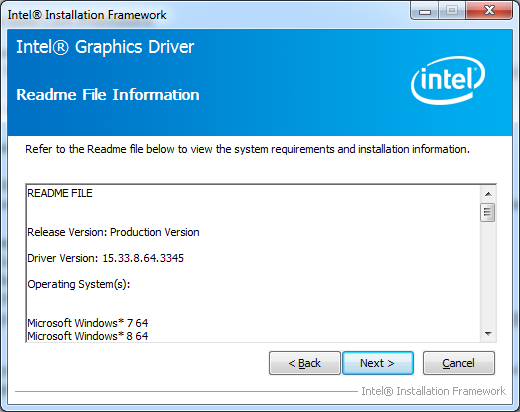

It is also important to determine what graphic hardware one has on their PC, and what graphic driver one is using on their PC. You need to know which openSUSE version in order to select the optimal solution to solve your problem. Either this can be read from clicking on the "My Computer" icon on one's desktop, and reviewing the section under "OS Information" next to "System", or instead simply open a terminal and type:

It is very important you know what openSUSE version you are using. A fix is a forced reinstall of all the display drivers (such as NVIDIA - see below if you need to identify your display) via YAST. You may well be able to reboot into the previous kernel without the problem (usually after an upgrade the last kernel is offered via a boot menu option). This issue has been reported in bug reports where the NVIDIA kernel module was not activated and there were KMP abnormalities in more than one type of NVIDIA driver so may be a general issue. If after a kernel upgrade in SLED 12 or openSUSE Leap your display defaults to basic display (or no graphic display) your display drivers may not have updated cleanly. It is recommended one determine their openSUSE version and read up on some practical graphic theory before proceeding to solve their problem. This section provides some guidance on how to sort out your graphic problem. With most modern hardware using a single display, configuration is automagic on-the-fly at each session start - no permanent display configuration files are needed. The reason for the misconfiguration can vary, dependent upon your openSUSE version. Typically the cause is your graphics are not configured properly. This guide is for all supported openSUSE versions up to and including openSUSE Tumbleweed. Typically this results in either a black screen upon reboot, or the wrong resolution being used in the graphical login manager and in X sessions. Upon installing openSUSE, the X system's automatic configuration may have failed to properly configure the graphics correctly. 5.7 7th thing to try (experts only - udev edits).


5.5 5th thing to try (Xorg -configure creation of a legacy nf file).5.4 4th thing to try (edit /etc/X11// directory).5.3 3rd thing to try (use installation config file).5.2 2nd thing to try (failsafe/safe-settings boot).4.3 Determine your graphic card version.


 0 kommentar(er)
0 kommentar(er)
